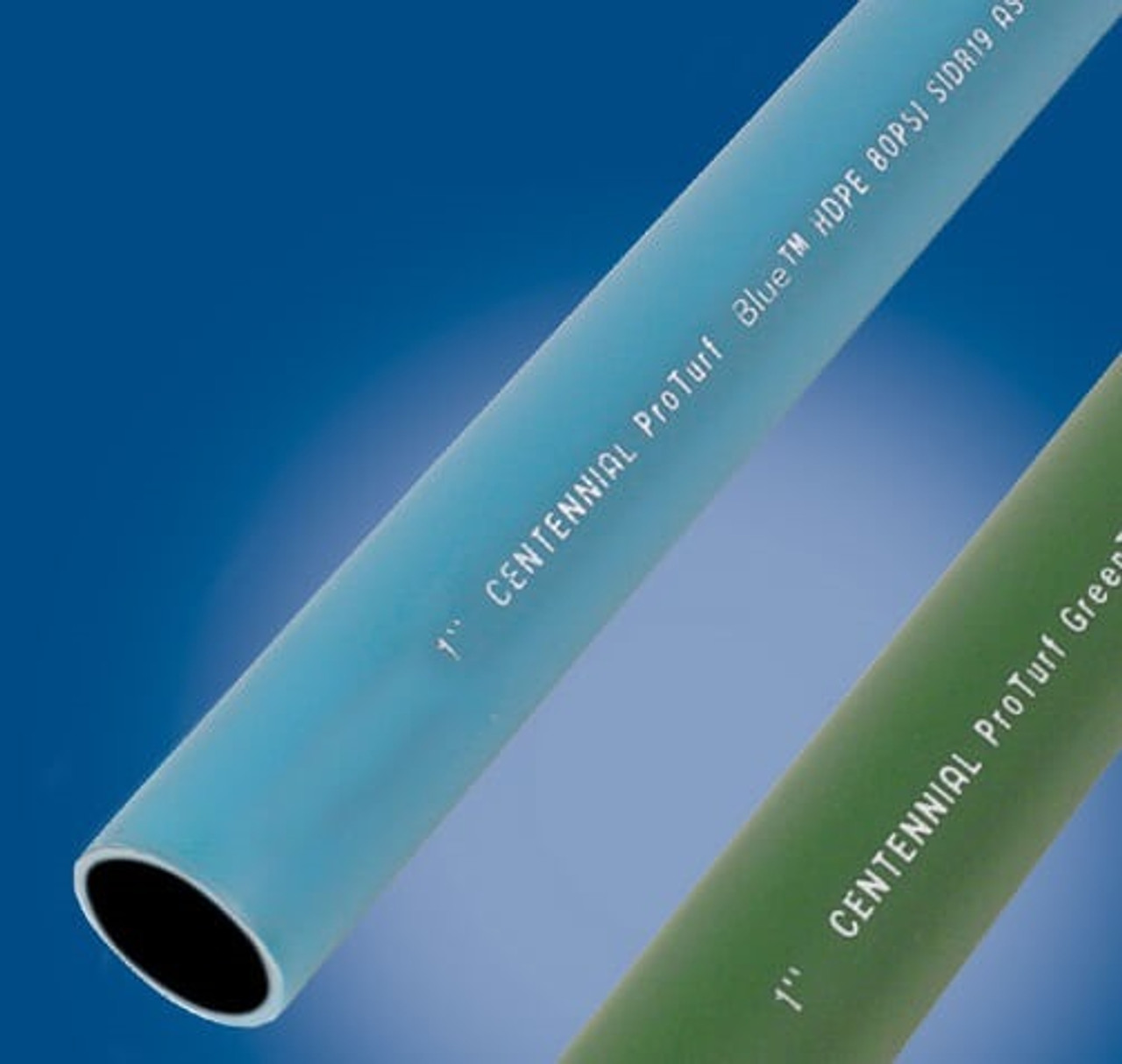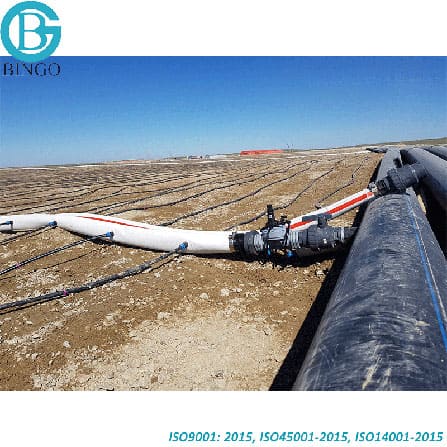Discover the Production Refine Behind High-Quality HDPE Pipe and Its Applications
The manufacturing process of high-grade HDPE pipelines is elaborate and methodical. It starts with the choice of raw products that enhance performance. Following this, ethylene goes through polymerization to create resin, which is then formed via extrusion. Quality control is extremely important, making certain that the end product meets strict standards. Nevertheless, the journey of HDPE pipes doesn't finish with manufacturing. Their applications throughout different sectors reveal a broader significance worth examining.
Comprehending HDPE: Qualities and Advantages

High-density polyethylene (HDPE) is a versatile polycarbonate recognized for its sturdiness and resistance to different environmental aspects. This product shows superb tensile strength, making it ideal for demanding applications. Its low-density framework adds to a lightweight product, promoting ease of dealing with and installment. HDPE also showcases remarkable resistance to chemicals, which lessens deterioration when subjected to severe materials.
The product's low moisture absorption better enhances its durability, making it perfect for usage in pipes and storage space tanks. Furthermore, HDPE is immune to ultraviolet (UV) radiation, making sure that items keep their honesty even when revealed to sunlight. Its versatility allows for the development of intricate shapes without compromising toughness. The environment-friendly nature of HDPE, often acquired from recycled materials, includes in its allure, promoting sustainable techniques in manufacturing. In general, these properties and benefits make HDPE a recommended choice for numerous commercial and consumer applications.
Resources Selection for HDPE Production
The choice of resources for HDPE manufacturing is important to confirm the final item meets the preferred specs and quality requirements. High-density polyethylene (HDPE) is largely created from polymerized ethylene, originated from fossil gas such as natural gas or crude oil. The top quality of these feedstocks substantially influences the mechanical and thermal residential properties of the final HDPE.
Additives additionally play a considerable role in boosting HDPE's performance, consisting of antioxidants, UV stabilizers, and colorants, which enhance longevity and resistance to ecological variables. The selection process have to consider not just the chemical make-up of the raw materials but additionally their handling features to assure effective production.
The sourcing of raw products need to focus on sustainability and compliance with environmental guidelines, as liable methods are important in today's market. Ultimately, mindful basic material selection lays the foundation for producing top quality HDPE pipelines ideal for varied applications.
The Extrusion Refine: Forming HDPE Pipe
The extrusion procedure plays a crucial function fit HDPE pipelines, starting with careful product prep work strategies that assure suitable circulation and uniformity. Equally important is the style of the die, which directly influences the last measurements and surface quality of the pipe. With each other, these aspects add substantially to the performance and high quality of HDPE pipe production.
Product Prep Work Techniques
Reliable production of HDPE pipes begins with careful material preparation strategies, particularly the extrusion procedure. Throughout this stage, high-density polyethylene material is first dried out to remove dampness, ensuring ideal flow features. The material is then fed into the extruder, where it undertakes heating and melting, transforming right into a thick state. This home heating process is very carefully controlled to maintain the product's honesty and efficiency. The liquified HDPE is forced through a die, shaping it into a constant pipe kind. Appropriate temperature level management during extrusion is essential, as it directly impacts the material's residential or commercial properties and the final product top quality. Once formed, the HDPE pipe is cooled down and cut to specified lengths, all set for subsequent processing and applications.
Die Design Value
Precision in die style plays an essential role in the extrusion procedure of HDPE pipes. The die works as the last shaping tool, straight influencing the pipe's dimensions, wall surface thickness, and surface coating. A well-designed die assurances consistent material flow, reducing problems such as irregularities and weak points. The geometry of the die have to be optimized to accommodate the details buildings of HDPE, including its viscosity and thermal behavior throughout extrusion. Furthermore, the cooling rate of the material as it passes through the die can substantially influence the pipeline's structural integrity. Spending in sophisticated die innovation is essential for manufacturers aiming to create high-quality HDPE pipes that fulfill industry requirements and client assumptions.
Quality Assurance Actions in HDPE Manufacturing
Although various factors affect the quality of HDPE pipeline production, efficient quality assurance actions are crucial to ensure consistency and dependability in the final item. Key quality control methods consist of rigorous product inspection, validating that the raw polyethylene meets established requirements for purity and density. Throughout the extrusion procedure, parameters such as temperature, stress, and cooling time are very closely kept track of to keep dimensional precision and structural stability
On top of that, post-production testing is crucial; producers usually conduct hydrostatic examinations to analyze the pipeline's toughness and resistance to stress. Visual examinations for surface defects additionally enhance quality control. Qualification from pertinent requirements companies, like ASTM or ISO, provides an extra layer of reliability. By implementing these thorough quality assurance measures, producers can reduce defects, boost performance, and make certain that the HDPE pipes satisfy the details requirements of various applications, ultimately causing customer satisfaction and trust in the item.
Applications of HDPE Pipe Throughout Industries
HDPE pipes are made use of throughout different industries as a result of their toughness and adaptability. In water circulation systems, they assure effective shipment, while in wastewater administration, they give reputable options for waste transport. Additionally, agricultural watering networks profit from HDPE's resistance to deterioration and flexibility, making it an optimal option for modern-day farming techniques.

Water Distribution Systems
A substantial number of markets depend on high-density polyethylene (HDPE) pipes for reliable water circulation systems. Known for their longevity and resistance to rust, HDPE pipelines are commonly utilized in metropolitan supply of water networks, agricultural watering, and commercial applications. Their light-weight nature promotes very easy handling and installation, lowering labor costs and time. Furthermore, HDPE pipes can fit numerous pressure degrees, making them suitable for both low and high-pressure systems. custom hdpe pipe manufacturing Midland click here TX. The versatility of the product enables smooth combination right into existing infrastructure, reducing the need for substantial excavation. In addition, HDPE's resistance to chemical seeping assurances that the water provided remains secure and tidy, making it an ideal selection for preserving the top quality of drinkable water across different industries
Wastewater Management Solutions
Efficient water distribution systems additionally lead the way for ingenious wastewater monitoring services, where high-density polyethylene (HDPE) pipelines play a considerable duty. Renowned for their durability and resistance to rust, HDPE pipelines are optimal for delivering wastewater in different setups. Their versatility permits simple installment in intricate environments, lessening the need for considerable excavation. Additionally, HDPE's smooth interior surface minimizes friction, improving circulation rates and efficiency. These pipelines are also immune to chemical leaching, making sure that contaminants do not jeopardize the surrounding atmosphere. Industries, communities, and treatment centers progressively depend on HDPE pipes for their integrity and long life, making them a preferred selection for modern wastewater management systems. This versatility highlights the crucial importance of HDPE pipes across many applications.
Agricultural Watering Networks
Agricultural irrigation networks profit considerably from using high-density polyethylene (HDPE) pipelines, which offer effective and trusted water delivery to crops. HDPE pipelines are lightweight, making them simple to move and install, while their adaptability permits for different configurations in varied terrains. These pipes demonstrate outstanding resistance to deterioration, chemicals, and UV radiation, guaranteeing durability in rough farming environments. Additionally, their smooth interior surface area decreases rubbing loss, optimizing water flow and lowering power prices related to pumping. The longevity of HDPE pipes, typically going beyond 50 years, adds to reduce maintenance and substitute expenditures. Farmers increasingly rely on HDPE pipelines to enhance irrigation performance and advertise sustainable farming practices, ultimately leading to enhanced plant yields and resource preservation.

Future Patterns in HDPE Pipeline Technology
As the demand for sustainable and reliable facilities expands, improvements in HDPE pipe innovation are positioned to change numerous sectors. Emerging fads consist of the combination of wise technologies, such as sensors and IoT capacities, which assist in real-time tracking of pipe conditions, reducing upkeep expenses and stopping leakages. In addition, the development of advanced manufacturing strategies, such as 3D printing, is making it possible for the manufacturing of complex, personalized pipe designs that accommodate certain task demands.
The focus on recycling and circular economic situation practices is driving the innovation of HDPE pipes made from recycled products, enhancing sustainability. Enhanced jointing methods, such as electro-fusion and mechanical fittings, are likewise enhancing setup performance and dependability. The expanding focus on environmental regulations is pressing suppliers to embrace greener production procedures, guaranteeing that HDPE pipelines not only fulfill industry standards however also cultivate an even more lasting future for infrastructure advancement.
Often Asked Concerns
Just How Does HDPE Compare to Other Plastic Products?
HDPE outmatches many various other plastic materials pertaining to sturdiness, chemical resistance, and flexibility. Its reduced density and high tensile stamina make it perfect for different applications, usually surpassing options in both performance and long life.
What Are the Environmental Impacts of HDPE Production?
The ecological effects of HDPE manufacturing consist of greenhouse gas discharges, energy intake, and potential air pollution from making processes. Furthermore, improper disposal can cause dirt and water contamination, elevating concerns concerning long-lasting eco-friendly effects.
Can HDPE Pipes Be Reused?
Yes, HDPE pipes can be reused. Several facilities accept utilized HDPE for processing, transforming it right into new items. This reusing adds to sustainability efforts, reducing plastic waste while saving sources and energy in the manufacturing cycle.
What Is the Life-span of HDPE Piping?

Just How Do Temperature Variations Impact HDPE Pipe Efficiency?
Temperature level variants significantly impact HDPE pipeline performance, impacting flexibility and strength. High temperature levels can lead to softening, while reduced temperatures might trigger brittleness, ultimately affecting the pipe's toughness and viability for different applications in diverse settings.